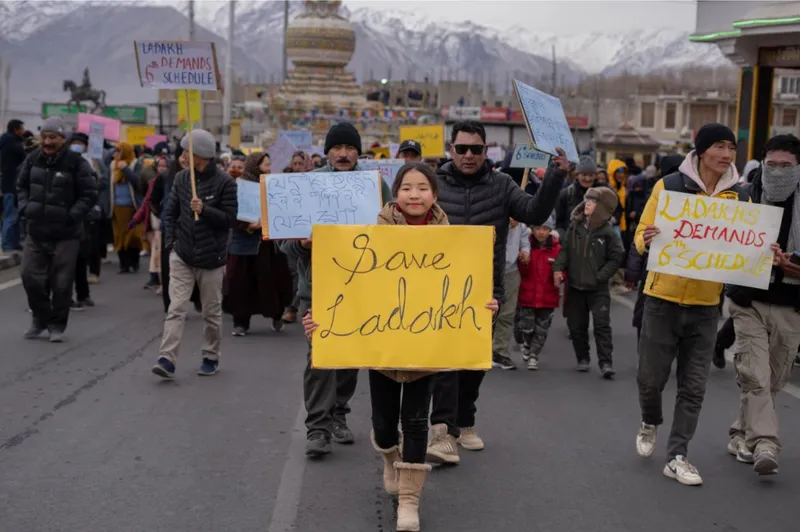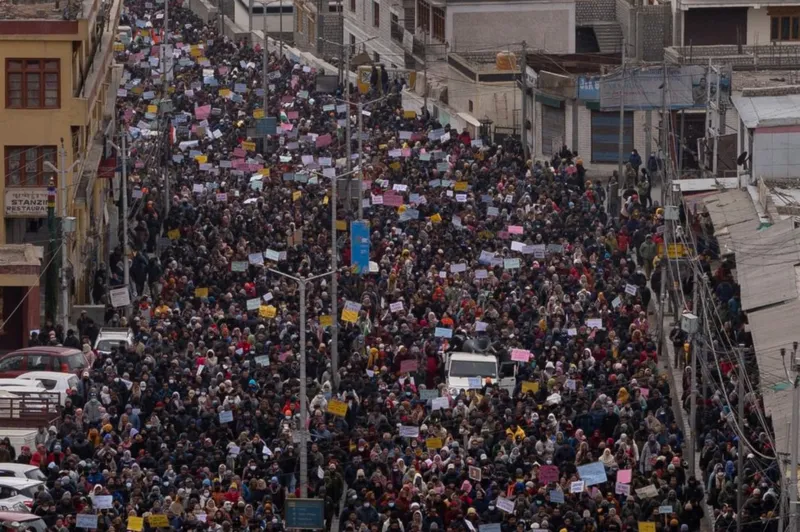
In India’s high-altitude Ladakh region, thousands are protesting in sub-zero temperatures. In 2019, the government fulfilled their longstanding demand for a region separate from Indian-administered Kashmir. But since 2020, they have frequently taken to streets, accusing the government of “betrayal” and unkept promises. Srinagar-based freelance journalist Auqib Javeed reports on what’s changed.
Braving sub-zero temperatures, environmentalist Sonam Wangchuk began his ‘climate fast’ on March 6. The Kargil Democratic Alliance (KDA) on Tuesday called for a half-day general strike on Wednesday, March 20, in solidarity with renowned education reformist Sonam Wangchuk, who has been on a hunger strike in Leh since March 6 over his demand for statehood and constitutional safeguards under the sixth schedule for the Union Territory of Ladakh.

Earlier this week, shops closed and thousands took to the streets in Kargil to demand statehood. In Leh, protesters have planned a border march next week.
“We were demanding a separate territory with a legislature,” says Chhering Dorjey Lakrook, a veteran Buddhist leader from Leh. “But we were granted only a federally governed territory.”
For people in Ladakh, who depend primarily on agriculture, the move also sparked fears it would affect the region’s culture and identity as it made it easier for those from outside the region to buy land in the area.
According to India’s home ministry, as of 5 April 2023, no Indian company had invested in Ladakh in the past three years, nor had anyone from outside purchased any land.
But residents remain apprehensive about an influx like in Jammu and Kashmir where, data shows, 185 outsiders have bought land between 2020-22. Their demands include statehood for Ladakh, jobs, protection of their land and resources, and a parliamentary seat each for Leh and Kargil districts.
They also want implementation of the Sixth Schedule, a constitutional provision that protects tribal populations and allows them to set up autonomous organisations that frame laws on land, health and agriculture. Nearly 97% of Ladakh’s population is tribal.
“The Sixth Schedule was designed to protect the rights of indigenous and tribal groups,” says Chhering Dorjey Lakrook, who until 2020 was president of the regional unit of India’s governing Bharatiya Janata Party (BJP). This, he adds, will save them from exploitation by industrialists.

Young people in the region are also concerned about not getting government jobs. Padma Stanzin, who heads Ladakh Students’ Environmental Action Forum (Leaf), says since 2019, not a single person has been recruited in a senior government role. “We fear our jobs will be taken over by outsiders,” she adds.
Ladakh’s BJP MP Jamyang Tsering Namgyal did not respond to BBC’s request for comments. Ladakh holds significant geostrategic importance for India as it shares borders with both China and Pakistan, the two countries which strongly condemned India’s decision to revoke Article 370.



